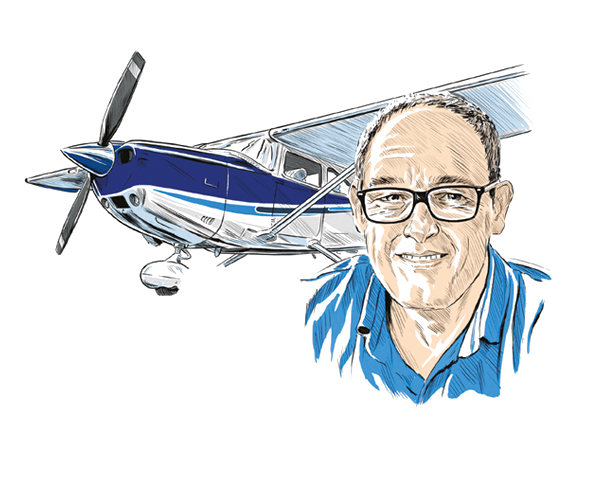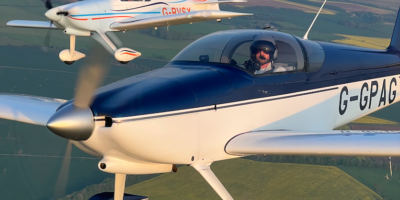The last couple of months have been interesting in a cataclysmic kind of way. I’m struggling to think of any aspect of aviation that’s not reeling from multiple body blows. Major airports are eerily quiet, regional airports are farming tumbleweed and many airlines are hanging on by their fingernails. In the GA world lots of airfields have not fully opened, PPL schools still can’t train (unless they’ve got something like a Tiger Moth or Stearman), and pilots up and down the country are waiting to spend money just as soon as they can regain club currency. But according to many of the (non-flying) greats, adversity has got quite a lot going for it – forcing us to think, change, adapt and all that other good stuff that has been the staple of the David Brents of this world for years. The perspective gained by the passing of time probably makes the positives easier to see, but looking around, the good news is that ‘mother necessity’ is already busy giving birth. Airfields, maintenance organisations, training schools – even aviation publishers – are changing and adapting. The desire to get through this, and to fly, seems undiminished.
Perhaps the likes of Shakespeare and Johnson (Samuel, not Boris) were correct? Maybe now’s exactly the time for a new approach, time to cast off the baggage gathered over the last few decades.
“Right now we’re in a position to pull on all the levers needed to give General Aviation a major boost”
What shall we sort out first? Airspace seems as good a place to start as any, particularly as we’re likely to have less busy skies for a while. I understand that there’s some concern over the number of infringements that have taken place since we started flying again. Surely this isn’t a big surprise? Airspace made more complex by complicated Notam opening and closing bits of it to match demand and controller resources, GA pilots who are maybe a bit rusty, and some airspace design that’s nothing short of laughable. Look at the mess that is Farnborough, it almost qualifies as entrapment, it’s so bad. Huge amounts of complex multi-stepped, multi-filleted controlled airspace for somewhere that’s probably got fewer movements and people coming and going than Sandown. It’s a bloody disgrace that it ever got approved, and it’ll be a bloody disgrace if it’s allowed to remain the mess that it is.
Related to airspace is the slow rolling out of instrument approaches. In a country with changeable weather, a lot of General Aviation and an accessible rating, the IR(R), you’d think we’d be showing the rest of the world how to do it, rather than how absolutely not to do it. I can’t remember how many times I’ve tried to explain the UK approach to approaches to non-UK pilots, but I can definitely remember their reactions, which are usually a mix of pity, mirth and disbelief. Along the lines of, “Oh yes, we have airfields that have approaches that can’t be used more than a few times a day – presumably because we’re worried the air will get worn out and maybe a bit tatty around the edges?” Or, “Oh yes, we have approaches in places where the weather is often bad enough to frequently need approaches, but that are only available to a small number of private operators!” And, “Oh yes, we have airports that would love approaches (even if they did come with a bunch of pointless restrictions), and who have spent years plus tens of thousands of pounds tying themselves up in more knots than you’d see at the world bondage championships, all without making any visible progress.”
Then there’s the whole missed opportunity thing. Right now we’re in a position to pull on all the levers needed to give General Aviation a major boost. A boost to business and holiday travel by GA aircraft, something that’s always much more pleasurable than flying with the locos, and is now even more attractive courtesy of COVID-19. Plus a boost to purely recreational aviation, thanks to the possibility of growing the microlight category to 600kg MAUW, while at the same time EASA is (eventually) allowing hours on three-axis microlights to be used for revalidation purposes, and who knows, perhaps more eventually. I’m told that the DfT is not a fan of the opt-out, something to do with leaving EASA and doing it better ourselves in 2021…
Finally, for now at least, there’s the incomprehensibility of aviation regulation. It may be getting (slowly) better, but if the highway code was written twice as clearly as the ANO it would still be impenetrable to most drivers – and would be considered unfit for purpose.
The thing is, to sort the airspace, to make real progress with instrument approaches, to embrace the opportunities offered by the 600kg opt out and all of the other opportunities that change brings, we need a different way of thinking, a different way of working, and maybe above all a different attitude. An attitude that’s unwilling to accept the status quo, and a confidence that’s able to look at what we have and see it for the ridiculous mess that it so often is. I know it’s easy to sit on the sidelines lobbing in the grenades, but I really do wonder if the people involved in approving complex airspace, or insisting on restrictions to approaches, look at themselves in the mirror and in that moment of isolated honesty see the monster they’ve created?
I hope this pandemic is a once in a lifetime thing, and while I’ll be very glad when it’s gone, I’ll be very sad if we don’t take the challenges it brings as an opportunity for real change and real progress.







